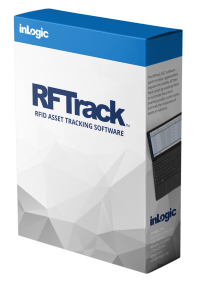LEARN ABOUT RFID
LEARN ABOUT RFID
RFID OVERVIEW
Radio Frequency Identification (RFID) is a data collection technology similar to barcodes, but instead of scanning a barcode it uses radio frequency communication to collect data from RFID tags. It is commonly referred to as automatic identification or auto-id, because it uses radio waves to automatically and uniquely identify objects such as assets, inventory, people or animals.
An electronic tag (transponder) is embedded with an integrated circuit (IC) that can store unique data about the object being tagged. A reader (interrogator) transmits radio waves at a specific radio frequency to communicate with and retrieve data from tags within its proximity.
RFID VS. BARCODE COMPARISON
RFID and barcodes are similar in that they are both data collection technologies, meaning they automate the process of collecting data. However, they also differ significantly in many areas. Although this comparison primarily focuses on the advantages of RFID over barcodes, RFID will not completely replace barcode technology. Barcodes offer some advantages over RFID, most notably their low cost.
- RFID is 15-20 times faster than manual and barcode processes for inventorying IT assets. (Source: RFID Journal)
- Some companies experience a 95% reduction in time using RFID (Source: Motorola)
- The #1 RFID application being deployed is IT asset tracking (Source: Aberdeen)
| Not required (in most cases) | Required | |
|
Passive UHF RFID:
- Up to 100+ feet (fixed readers) - Up to 50+ feet (handheld readers) Active RFID: - Up to 100's of feet or more |
From several inches up to several feet | |
| Dozens to hundreds simultaneously | Only one at a time | |
| RF (Radio Frequency) | Laser (1D) or Imager (2D) | |
| Like the TSA (Transportation Security Administration), some RFID frequencies don't like Metal or Liquids. They can interfere with some RF Frequencies. Fortunately, RFID tag vendors have overcome the metal interference issues by designing tags that leverage metal to enhance the read range. | Obstructed barcodes cannot be read (dirt/paint covering barcode, damaged/faded barcode, etc.) |
RFID FOR ASSET TRACKING
RFID has many advantages over manual and barcode processes for physically inventorying assets. The main advantages are...
RFID Can Read Multiple Tags Simultaneously
Performing a manual inventory process requires personnel to individually match tag ID's or serial numbers. This can be very time consuming and prone to inaccuracies. Using barcodes speeds up the inventory process and makes it more accurate, but still requires each asset to be scanned individually. Many handheld RFID readers for can read up to 20 tags or more simultaneously.
RFID Does Not Require Line-of-Sight
Both manual and barcode processes require that the tags be physically located and viewable. Another advantage of RFID is the ability to read tags that are not visible. Unlike barcodes and human readable tags that must be physically located and viewable to read, RFID tags do not need to be visible to be read. For example, tagging a PC up under a desk would require personnel to crawl up under the desk to physically locate and view the tag when using a manual or barcode process. Using an RFID tag would allow personnel to read the tag through the desk without even seeing it. There are some exceptions to this rule when metal and liquid are involved.
RFID Improves Processes
Physically inventorying and auditing assets can be a time consuming process that can pull valuable employees from their normal job responsibilities to participate in an inventory. In many cases these employees are over-qualified and over-paid for the task. At a minimum, pulling these personnel away from their responsibilities can affect the bottom line. Implementing an RFID solution can dramatically reduce the man-power required to keep track of your assets and provide better visibility.



